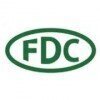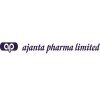Senior Officer QA
10+ Senior Officer QA Interview Questions and Answers

Asked in Indoco Remedies

Q. If there is a change in the dissolution limit, what will be the impact?
Changing dissolution limits affects drug release, bioavailability, and regulatory compliance.
Dissolution limits determine how quickly a drug releases its active ingredient in the body.
A tighter limit may enhance bioavailability, leading to improved therapeutic effects.
For example, if a tablet's dissolution limit is changed from 30 minutes to 15 minutes, it may lead to faster onset of action.
Conversely, a looser limit could result in slower drug release, potentially reducing e...read more

Asked in Medicef Pharma

Q. What is the sampling process during the compression stage?
The sampling process during compression ensures quality control by selecting representative samples for testing.
Identify critical quality attributes (CQAs) to monitor during compression.
Select a statistically valid sample size based on batch size.
Use random sampling techniques to avoid bias, e.g., selecting every 10th tablet.
Conduct tests on samples for uniformity, potency, and dissolution rates.
Document findings and adjust the compression process if deviations are found.

Asked in FDC

Q. What is the process of validation in your context?
Validation ensures that a product meets specified requirements and functions correctly in its intended environment.
Define validation criteria based on user needs and regulatory requirements.
Conduct validation planning, including scope, resources, and timelines.
Execute validation activities such as testing, inspections, and reviews.
Document results and ensure traceability to requirements.
Examples include software validation in medical devices or pharmaceuticals.

Asked in FDC

Q. What are the stages of the sampling process?
The sampling process involves defining the population, selecting a sample, and analyzing data to draw conclusions.
Define the population: Identify the entire group you want to study, e.g., all patients in a hospital.
Determine the sample size: Decide how many individuals to include in the sample, e.g., 100 patients.
Select the sampling method: Choose a technique like random sampling or stratified sampling, e.g., random selection of patients.
Collect the data: Gather information f...read more

Asked in Intas Pharmaceuticals

Q. What is line clearance at different stages?
Line clearance at different stages refers to the process of ensuring that a production line or area is free from any previous product or material before starting a new production or process.
Line clearance is performed at various stages such as before starting a new batch, after completing a batch, or during equipment changeover.
It involves thorough cleaning, removal of any residual material, and verification of cleanliness.
Line clearance is important to prevent cross-contamin...read more

Asked in Medicef Pharma

Q. What is the process for calibrating friability?
Calibrating friability involves assessing tablet durability through controlled mechanical stress tests.
1. Prepare a sample of tablets to be tested for friability.
2. Use a friabilator, which is a device designed to subject tablets to mechanical stress.
3. Set the friabilator to a specific speed and time, typically 100 revolutions for 4 minutes.
4. Weigh the tablets before and after the test to determine weight loss.
5. Calculate the percentage of weight loss to assess friability;...read more

Asked in FDC

Q. What is AQL sampling and what are its limits?
AQL sampling is a statistical method used in quality control to determine the acceptable quality level of a product batch.
AQL stands for Acceptable Quality Level, which is the maximum percentage of defective units that is considered acceptable in a batch of products.
AQL sampling involves randomly selecting a sample of units from a batch and inspecting them for defects.
The AQL limits are predetermined values that specify the maximum number of defective units allowed in a sampl...read more

Asked in FDC

Q. What is the definition of deviation?
Deviation refers to a departure from established standards or protocols in processes or results.
Deviation indicates a non-conformance to predefined specifications.
It can occur in manufacturing, clinical trials, or quality control processes.
Example: A batch of medication fails to meet potency specifications.
Deviations must be documented and investigated to determine root causes.
They can be classified as minor or major based on their impact on quality.
Share interview questions and help millions of jobseekers 🌟

Asked in HSPPL

Q. How does a microwave oven work?
Microwave ovens use electromagnetic radiation to heat food by exciting water molecules within it.
Microwaves are a form of electromagnetic radiation with a wavelength ranging from 1 millimeter to 1 meter.
The microwaves penetrate the food and cause the water molecules to vibrate, generating heat through friction.
The rotating plate inside the microwave helps to ensure even heating of the food.
Metal objects should not be placed inside a microwave as they can cause sparks due to r...read more

Asked in FDC

Q. How do you perform sampling?
Sampling is the process of selecting a subset of a population to represent the entire group for testing or analysis.
Determine the population to be sampled
Choose a sampling method (random, stratified, cluster, etc.)
Decide on the sample size
Collect the samples
Analyze the samples and draw conclusions

Asked in Medicef Pharma

Q. How do you collect a composite sample?
Composite sampling involves collecting multiple samples from different locations to create a representative sample.
Identify the sampling area and divide it into sub-locations.
Collect samples from each sub-location using consistent methods.
Combine the individual samples into one composite sample.
Ensure proper labeling and documentation of each sample.
Example: In soil testing, collect samples from various depths and locations to analyze overall soil quality.

Asked in Intas Pharmaceuticals

Q. What are media fill interventions?
Mediafill interventions are activities conducted to assess the effectiveness of aseptic processes in pharmaceutical manufacturing.
Mediafill interventions involve simulating the manufacturing process using a sterile growth medium instead of the actual product.
These interventions are performed to evaluate the capability of personnel, equipment, and facilities to maintain sterility during production.
During mediafill interventions, samples are collected and tested for microbial c...read more
Asked in HSPPL

Q. What are Class A preservatives?
Class A preservatives are antimicrobial agents that are considered safe for use in food and pharmaceutical products.
Class A preservatives are substances that prevent the growth of microorganisms in products.
They are considered safe for consumption and are approved by regulatory authorities.
Examples of Class A preservatives include sodium benzoate, potassium sorbate, and parabens.

Asked in Lupin

Q. What is a deviation?
Deviation is a departure from a standard or norm, often in the context of quality assurance.
Deviation is a variation from an established process or procedure.
It can be caused by human error, equipment malfunction, or external factors.
Deviation must be documented, investigated, and corrective actions taken to prevent recurrence.
Examples include a machine malfunction causing a product defect or a missed step in a manufacturing process.

Asked in FDC

Q. What is a media fill?
Media fill is a simulation test used in pharmaceutical manufacturing to ensure the aseptic filling process is performed correctly.
Media fill involves filling sterile growth media instead of actual product to simulate the manufacturing process.
The filled containers are then monitored for any microbial growth to ensure the process is aseptic.
Media fill tests are conducted periodically to validate the aseptic filling process and equipment.
Examples of media fill tests include fil...read more
Asked in Steri Professional Workwears

Q. Process of syrup, suspension
The process of making syrup and suspension involves mixing active ingredients with a liquid base to create a homogeneous mixture.
Start by measuring out the active ingredients and the liquid base.
Mix the active ingredients with the liquid base thoroughly to ensure uniform distribution.
Use appropriate equipment such as a mixer or homogenizer to achieve a smooth consistency.
Consider factors like pH, viscosity, and stability when formulating the syrup or suspension.
Perform qualit...read more
Interview Experiences of Popular Companies






Calculate your in-hand salary
Confused about how your in-hand salary is calculated? Enter your annual salary (CTC) and get your in-hand salary


Reviews
Interviews
Salaries
Users










